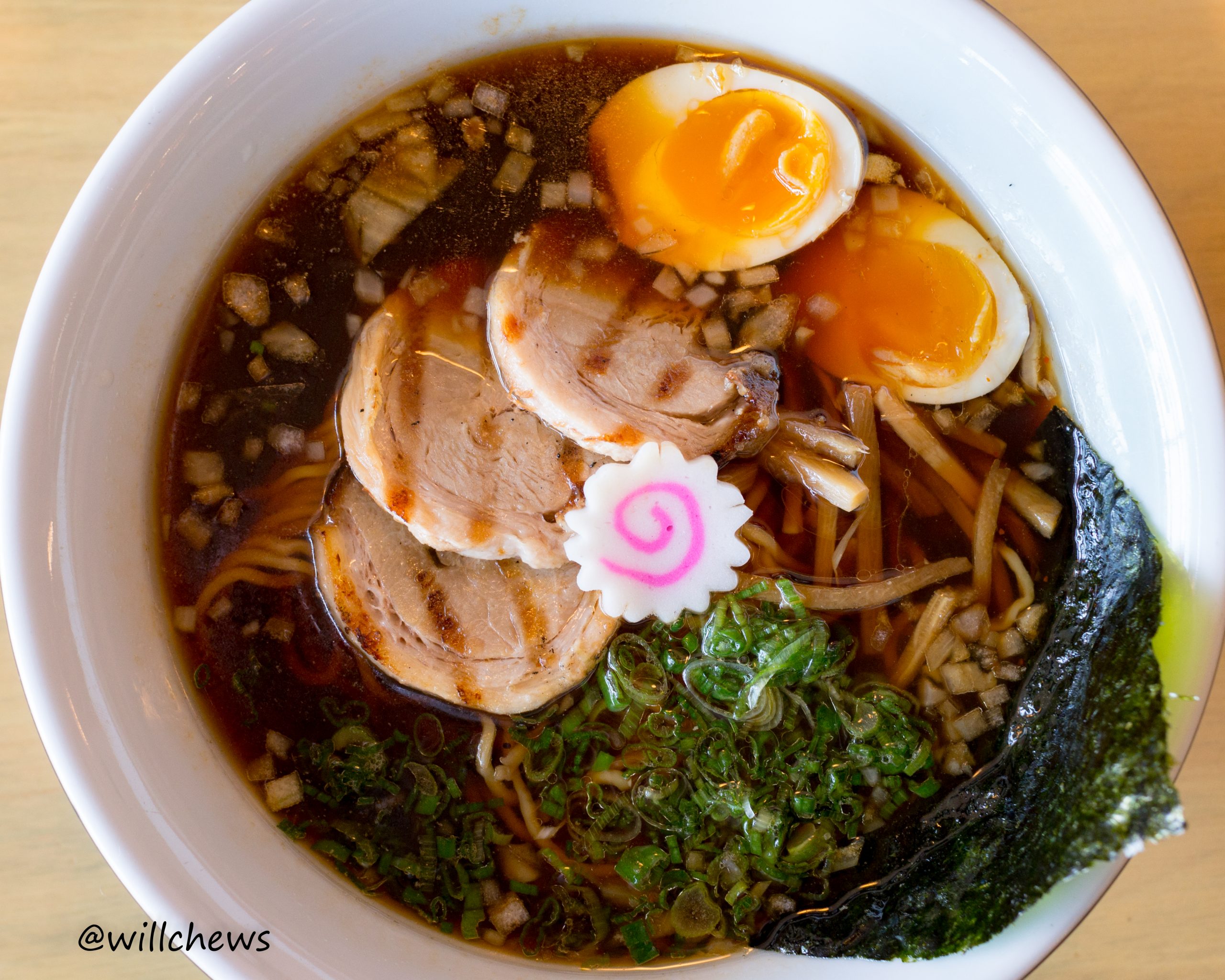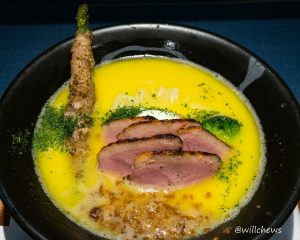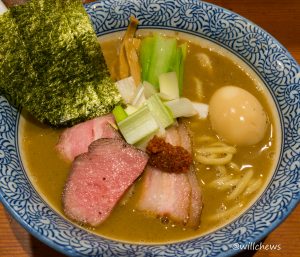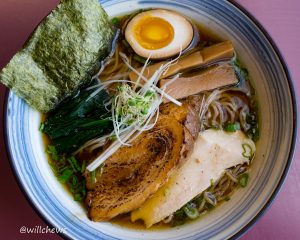George Itoh vowed never to work in a kitchen again.
As a Nisei Japanese-American who spent his high school and college years in the 1980s in the suburbs of Milwaukee working in teppanyaki–what Americans mistakenly call hibachi–restaurants, he gained appreciation for the traditions and expertise behind Japanese cuisine but vowed to never again work in a kitchen. Subsequently, he worked in various jobs in the creative sector in 1990s and early 2000s, from consulting for Japanese artistic clients, to graphic and interior design work, to early web development work.
Yet in the late 2000s, when Ippudo sought to establish a branch in New York as part of its effort to reinvigorate and rebrand the Japanese ramen chain in the eyes of overseas clientele, he was pulled back in. Under George’s and Ippudo’s NYC management, the objective was to make everything from scratch including the noodles. This meant installing a noodle-making machine first in its its original East Village location and later in Ippudo’s (second) Hell’s Kitchen location. The latter had production capacity for 12-13K bowls a day, which meant it could supply noodles for Ippudo’s NYC branches as well as other ramen shops in the area, such as Nonono (Ramen No. 160). Once Ippudo went public in 2017, Itoh was among the staff who left to pursue new opportunities. Along with a fellow Ippudo alum, Andy Tam–now executive chef at Ichigoh–the two opened up a ramen shop in the Deep Ellum entertainment neighborhood in Dallas.
Since arriving on the Dallas scene, Itoh has been vocal in his efforts to go against the grain of most ramen served in the US and to educate diners on the finer points of ramen. The menu of Ichigoh differs very much from either the Hakata tonkotsu served in Ippudo or the tonkotsu/spicy-miso menu staple offered at most American ramen shops. Instead of these kotteri options, Ichigoh emphasizes assari ramen, with five different shio or shoyu options and just one thicker-bodied choice in the toripaitan.
In addition, Itoh also revealed the dirty secret behind many American ramen shops: he claims that at least 85% of the ramen served in the US use broth concentrates from the likes of Somi and Sun Noodle, with most shops doing just a bit of work to add their own personal wrinkle to the broth. Apparently, the average US ramen shop is not willing to expend the 12-16 hours it takes to make tonkotsu broth from scratch: this is can be chalked up to lack of expertise as well as having a differing business model than in Japan, since unlike their Japanese counterparts, most American ramen shops have extensive non-ramen menus and can’t (or won’t) devote the necessary time and space to boil pork bones for the better part of a day. Certainly Ichigoh falls into this category, as it took tonkotsu ramen off its menu because it was just too labor intensive.
Niboshi rarely appears on American ramen menus, and its presence on Ichigoh’s menu made my question of, “which Dallas ramen shop to visit in between stuffing my face with barbecue and tacos?” easy. The niboshi shoyu ramen is essentially a chicken-shoyu bowl, with the broth made from chicken stock and the bowl finished off with a good dollop of emulsified chicken fat that is elemental to the style. The tare is a neutral one, usable for both the veg- and non-veg shoyu options, and the niboshi flavor actually comes from a mixture of niboshi, dried saba (鯖, mackerel) imported from Kyoto, and kastsuo steeped in the komiabura. While the depth of the chicken and sweet shoyu flavors came through clearly in the broth–if a touch oily–I couldn’t detect any niboshi flavor at all. This, George explained, was in part due to their seafood flavor preparation methods and limitations of fishy flavors’ appeal in the local market. His reasoning is understandable, but in that case I think a potential solution is to offer this bowl as a chicken-shoyu option, and then offer a separate and more strongly flavored niboshi option for the purists.
In keeping with Itoh and Lam’s emphasis on the “simplicity” of Japanese ramen, the other items within the bowl were kept to a minimum. The noodles were from from Nishiyama in Sapporo–the same suppliers for the Daikaya group in DC–which were on the chewy slide, quite yellow and alkali. The pork belly was relatively lean and did not stand out in its flavor or texture. It surprisingly was not finished off with an Iwatani torch, which goes against the (welcome) current Japanese and US trends of finishing pork belly chashu. Other than that, the other toppings were scallions, a slice of naruto, some well-made ajitama that was an add-on, some menma that I thought were good but would’ve preferred to have been thicker, and a slice of nori.
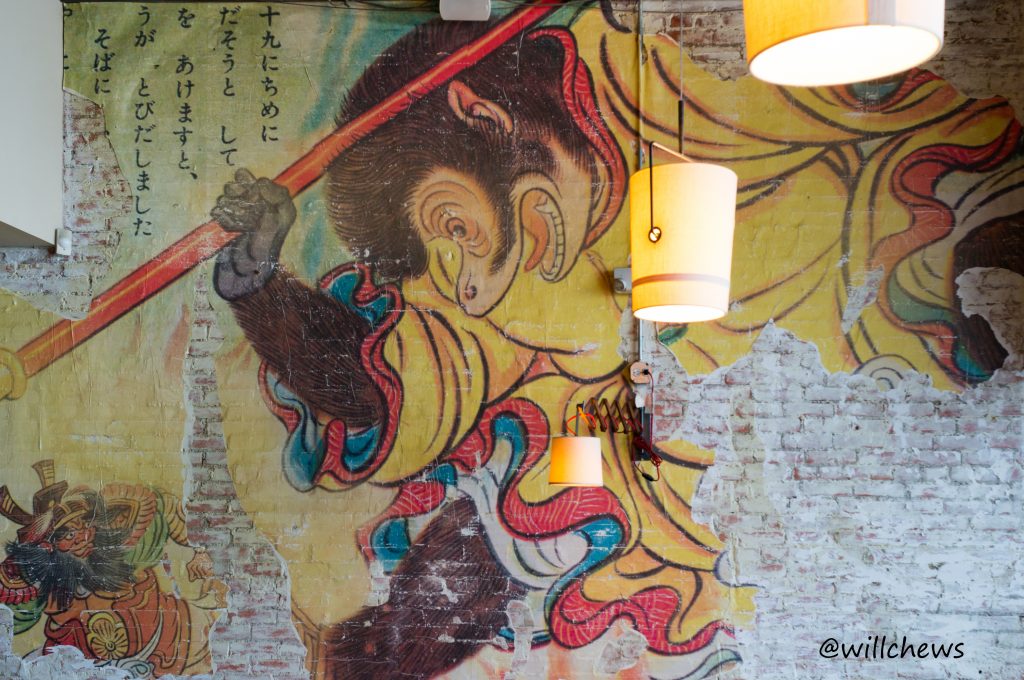
This is a quality and relatively straightforward chicken-shoyu bowl, a good change of pace from standard American ramen menus where even their shoyu renditions feature ingredient smorgasbords that often includine both corn and kikurage–an abominable combination for shoyu. This is a good rather than a great bowl, but George and Andy are doing important work in promoting the principle that in ramen, as in most things, one has to understand and be proficient in the fundamentals of the style before indulging in artistic license. It’s a lesson that many American shops have not absorbed and would do well to study.
Q(ueue) Factor: None (Weekday 1130)
Sense: Hard to ignore that giant Monkey King mural on the side wall
Price: Niboshi Shoyu ($12) + Ajitama ($2) + Tax/Tip
